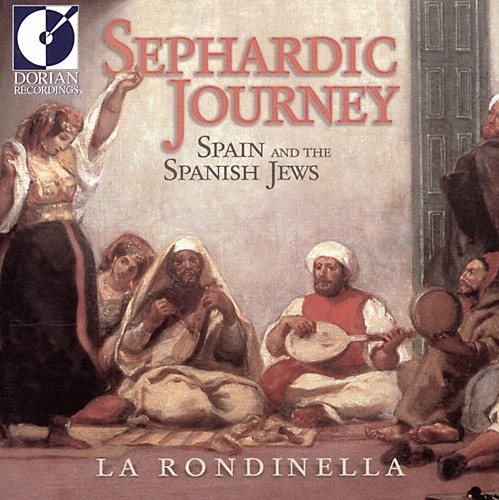
medieval.org
sonoluminus.com - dorian
Dorian DOR 93 171
octubre de 1998
St. John's Episcopal Church, Ellicott City, Maryland
Sephardic Journey
Spain and the Spanish Jews
SEFARDÍ · Sephardic Songs
01 - Tres hermanicas eran [2:54]
02 - Alta, alta, va la luna [1:56]
03 - Paxarico tú te llamas [3:16]
04 - Poco le das, la mi consuegra [5:03]
05 - Durmo la nochada [3:12]
06 - Yo era niña de caza alta [2:13]
07 - Una noche al bodre de la mar [1:50]
08 - A la uno nací yo [2:21]
09 - Morenica sos [2:48]
10 - El Dio alto [2:10]
11 - Avrix mi galanica [2:33]
12 - El paso del mar rojo [3:49]
RENACIMIENTO · Spanish Renaissance
13 - Juan del ENCINA (1468-c.1530). Antonilla es desposada [2:01]
14 - Claros y frescos ríos [2:23]
15 - Diego ORTIZ (c.1510-c.1570). Recercada sobre 'O felice occhi miei' [1:45]
16 - Diego ORTIZ. Recercada ottava [1:46]
17 - Luis VÉLEZ DE GUEVARA (fl.1500). Ay luna que reluzes [2:00]
18 - Juan PONCE (c.1480-after 1521). Torre de la niña [1:42]
19 - Mateu FLETXA. Vella de vos [4:29]
20 - Alonso MUDARRA (c.1510-1580). Fantasia [1:36]
21 - Alonso MUDARRA. Romanesca. O guardame las vacas [1:39]
22 - Juan del ENCINA. Pues que mi triste penar [2:08]
23 - JOSQUIN. In te, Domine, speravi [2:12]
24 - Luis MILÁN (c.1500-c.1561). Fantasía [2:03]
25 - Alonso MUDARRA. Canción. Claros y frescos ríos [1:53]
26 - Francisco de PEÑALOSA (c.1470-1528). El triste que nunca os vio [1:43]
27 - El cervel [2:09]
La Rondinella
Alice Kosloski, alto
Paul Bensel, recorders, crumhorn
Howard Bass, lute, guitar, harp, percussion
Tina Chancey, bass viol, rebec, kamenj, lyra, recorder, percussion
Guest artists:
Barbara Hollinshead, mezzo-soprano
Scott Reiss, recorder, percussion